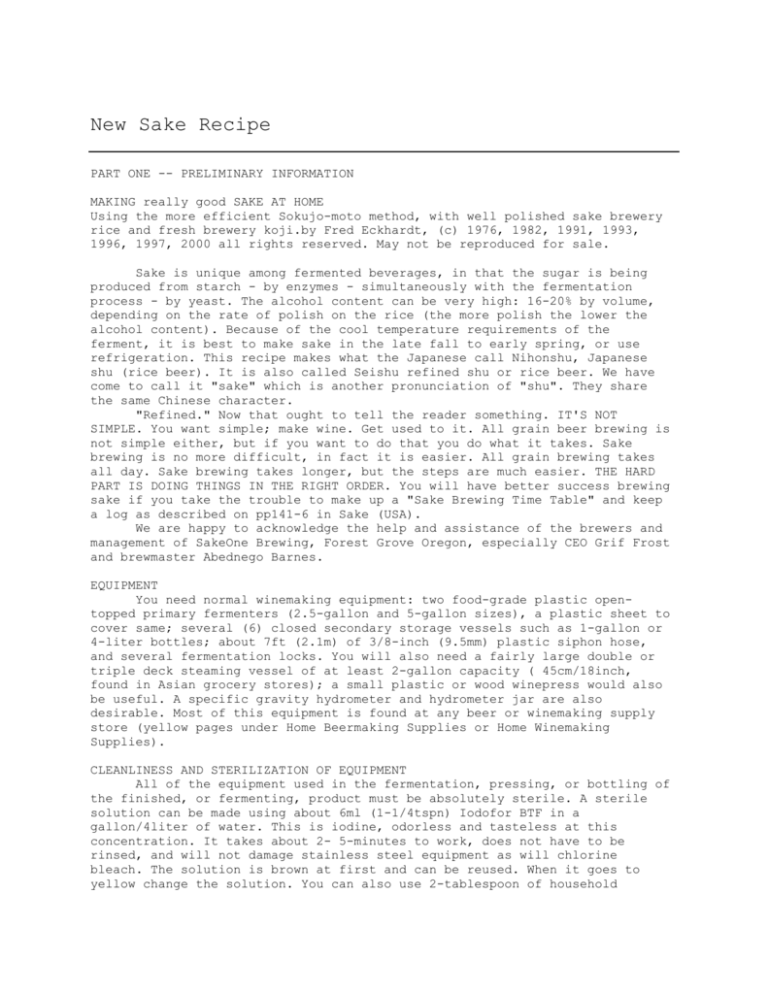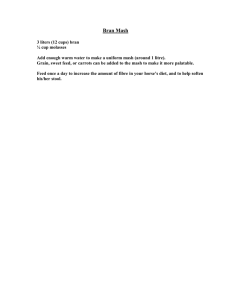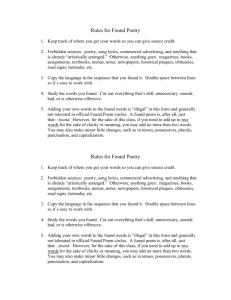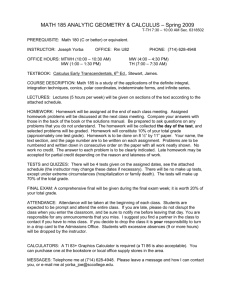
New Sake Recipe
PART ONE -- PRELIMINARY INFORMATION
MAKING really good SAKE AT HOME
Using the more efficient Sokujo-moto method, with well polished sake brewery
rice and fresh brewery koji.by Fred Eckhardt, (c) 1976, 1982, 1991, 1993,
1996, 1997, 2000 all rights reserved. May not be reproduced for sale.
Sake is unique among fermented beverages, in that the sugar is being
produced from starch - by enzymes - simultaneously with the fermentation
process - by yeast. The alcohol content can be very high: 16-20% by volume,
depending on the rate of polish on the rice (the more polish the lower the
alcohol content). Because of the cool temperature requirements of the
ferment, it is best to make sake in the late fall to early spring, or use
refrigeration. This recipe makes what the Japanese call Nihonshu, Japanese
shu (rice beer). It is also called Seishu refined shu or rice beer. We have
come to call it "sake" which is another pronunciation of "shu". They share
the same Chinese character.
"Refined." Now that ought to tell the reader something. IT'S NOT
SIMPLE. You want simple; make wine. Get used to it. All grain beer brewing is
not simple either, but if you want to do that you do what it takes. Sake
brewing is no more difficult, in fact it is easier. All grain brewing takes
all day. Sake brewing takes longer, but the steps are much easier. THE HARD
PART IS DOING THINGS IN THE RIGHT ORDER. You will have better success brewing
sake if you take the trouble to make up a "Sake Brewing Time Table" and keep
a log as described on pp141-6 in Sake (USA).
We are happy to acknowledge the help and assistance of the brewers and
management of SakeOne Brewing, Forest Grove Oregon, especially CEO Grif Frost
and brewmaster Abednego Barnes.
EQUIPMENT
You need normal winemaking equipment: two food-grade plastic opentopped primary fermenters (2.5-gallon and 5-gallon sizes), a plastic sheet to
cover same; several (6) closed secondary storage vessels such as 1-gallon or
4-liter bottles; about 7ft (2.1m) of 3/8-inch (9.5mm) plastic siphon hose,
and several fermentation locks. You will also need a fairly large double or
triple deck steaming vessel of at least 2-gallon capacity ( 45cm/18inch,
found in Asian grocery stores); a small plastic or wood winepress would also
be useful. A specific gravity hydrometer and hydrometer jar are also
desirable. Most of this equipment is found at any beer or winemaking supply
store (yellow pages under Home Beermaking Supplies or Home Winemaking
Supplies).
CLEANLINESS AND STERILIZATION OF EQUIPMENT
All of the equipment used in the fermentation, pressing, or bottling of
the finished, or fermenting, product must be absolutely sterile. A sterile
solution can be made using about 6ml (1-1/4tspn) Iodofor BTF in a
gallon/4liter of water. This is iodine, odorless and tasteless at this
concentration. It takes about 2- 5-minutes to work, does not have to be
rinsed, and will not damage stainless steel equipment as will chlorine
bleach. The solution is brown at first and can be reused. When it goes to
yellow change the solution. You can also use 2-tablespoon of household
chlorine bleach in a gallon of water. Rinse the equipment carefully in this
solution, and allow to drain completely before using. Water rinse is usually
not necessary, as this low concentration will likely dissipate soon and not
leave any flavor in the finished sake, but there is no guarantee, the Iodofor
is better.
All measurements are given volumetrically, and the 8-oz cup is easiest
to use, since the relationships are volumes of ingredients rather than
weights. This recipe is designed to brew using the special brewers' polished
California Akito Machi short grain rice (from the SakeOne brewery in Forest
Grove, Oregon), which has been polished to a total of 58% to 63% of its
original weight, and the special koji from that same brewery. When using any
other rice (Homai, Kokuho Rose, etc.), follow the directions in my book "Sake
(USA)" or those in the earlier recipes in this series, which is found on the
internet at www.spagnols.com. Your water should be soft, and with no iron in
it at all, if your water is not soft, use distilled or deionized water. You
will need to add the Morton Salt Substitute in the yeast mash, which is the
only generally available chemical addition with the right concentration of
proper nutrients and water adjustment for sake brewing to match the famous
Japanese miyamizu (heavenly water): potassium chloride, fumaric acid, triand mono-calcium phosphate.
The yeast needs other nutrients; epsom salts and regular winemaker's
yeast nutrient will suffice. The alcohol content may be controlled by varying
the addition of water late in the procedure (Stabilization Stage). Our recipe
will produce about 2-USgallons (7.6-liters) of 18.5% alcohol (by volume -genshu strength) sake. Adding more water will produce additional sake, but
with lower alcohol content. Use of even more highly polished rice (to 50% or
more), will also reduce possible alcohol content. Extra water (to reduce
alcohol to the normal commercial level 15-16%abv) should be added at the
Stabilization stage, e.g. about 28-oz (830ml) will make sake with normal
commercial ABV of 16%. Be very careful; such water, once added, cannot be
removed. Pay attention to our warnings throughout this recipe.
INGREDIENTS
better SAKE RECIPE
(single recipe--may be halved, doubled or tripled)
U.S.
item
10-lbs
Brewers polished rice (to 58-70%)
2.5-lbs(40-oz) Brewers koji
2-USgal
water
metric4.54kg
1.13kg
7.6 l
PLUS acid adjustment using lactic acid if possible:
1-tspn
Lactic acid 88%
or, alternately, if no lactic acid is available
8/10-tspn
Winemaker's Citric acid, or Acid blend
4.1gm
AND the following:
3/5-tspn
winemaker's yeast nutrient
A pinch of epsom salts (magnesium sulfate--MgSO4)
4gm
0.7gm
ALSO
yeast
finings
1.25-tspn
packet
packet
7gm
WyEast sake yeast
Bentonite or Sparkolloid
Morton Salt Substitute (only)
3.8ml
SAKE--STAGES OF FERMENT
The ingredients are assembled in the fermenter in five
increments:
1. Shubo or yeast mash.
2. Moromi or main ferment, consisting of
a. Hatsuzoe, first addition
b. Nakazoe, middle addition
c. Tomezoe, final addition.
d. Stabilizing addition.
The various stages of fermentation require different temperatures,
these can be as low as 40F/4.4C which would probably require refrigeration,
and warmer (50-60F/10-16C) which might call for a cellar, or at least a
cooler time of the year, such as fall-winter-spring. Some ferments are done
as warm as 73F/23C which might require a warmer room. I solve these problems
by fermenting in the winter and moving the ferment about my house and garage
to achieve the necessary temperatures for the various stages. Good
temperature control is essential to making good sake.
PREPARATION OF THE RICE
For each addition prepare the rice as follows:
1. Wash the rice completely and thoroughly in running cold water to
remove all starch powder.
2. Cover the rice with 2- 3-inches (50- 75mm) of very cold water, steep
for about an hour, and drain for another hour before using. The
object here is to add moisture to about 25-30% by weight. I don't
recommend it, but you COULD steep for 6- 11-hours and drain for 1hour (which is not as good) but may be more convenient for you, and
with only a modest effect on the quality of the finished product.
3. Place the rice in the double deck steamer - which must have plenty
of water in the bottom to allow for the long 1-hour steam. The rice
is not boiled, but steamed - separated above the boiling water - for
an hour.
4. The koji for each addition (except that for the very first step the shubo or yeast mash) is always added to the mash about 12 hours
before adding the freshly steamed rice for that addition. At that
time also add the koji portion, and half of the water for the next
addition as well. Freeze overnight the other half of that water,
which will help cool the freshly steamed rice, when that is ready
(the next day after 12-hours).
5.
CHART OF ADDITION OF MATERIALS
Yeast
First
Middle
Final
Totals
Mash
Addition Addition Addition
Steamed
ounces
12
20
48
80
160 (10-lb)
rice
8-oz
1-1/2
2-1/2
6
10
20
cups
grams
340
567
1,361
2,268
4,536
Koji
ounces
4
8
12
16
40 (2.5-lb)
8-oz
1/2
1
1-1/2
2
5
cups
grams
113
227
340
454
1,134
Water
ounces
20
22
70
144
256 (2 Usg)
8-oz
2-1/2
2-3/4
8-3/4
18
32
cups
cc/ml
620
690
2,070
4,259
8,520
PART TWO -- MOTO -- YEAST MASH -- SHUBO
SHUBO OR YEAST MASH
(total time 5- 7-days)
Our original recipe Sake (USA) used very traditional methods to start
the shubo (yeast mash). This was a modification of the original ancient and
traditional method for preparing the yeast mash called yamahai moto, it is
still used by some Japanese sake brewers to this day. That method was tedious
and convoluted, but entirely natural, except that one added yeast to the
mash. This complicated procedure made sake brewing seem far more difficult
than it was. The real difficulty lies in organizing the steps of the process,
so as to do each in its proper turn.
Our current recipe incorporates a more modern procedure, which has the
advantage of being simpler to carry off, while also reducing the acidity of
the finished sake. The long Yamahai mash relied on natural lactobacillus for
acidification. You add acid in this procedure, which is called sokujo-moto.
The net result is lower total acid in the end product and simpler production
steps. The sokujo method was invented in 1909, but has been improved and
updated often since then. It is currently the most popular yeast mash
production method in use by Japanese sake brewers. Lactic acid is called for,
but homebrew and winemaking supply stores don't always stock lactic acid. If
that is the case, you could also use the equivalent, and more available but
not as good, dry citric acid.
SHUBO - THREE DAYS EARLY
Important Please note that you must add very active yeast to this yeast
mash (#3.a. below) and that means you must start the incubation of your
Wyeast early enough, (at least 2- 3-days before the start), so the packet is
enlarged and fully active to be ready when added.
SHUBO - THE NIGHT BEFORE DAY ONE
1.
a. Use 2.5 cups (20-oz/600ml) good brewing water that has been
dechlorinated by standing for a couple of days. The water should be
very low in hardness (less than 100ppm), and with no iron content at
all (less than 0.05ppm). If your water department uses sodium or
calcium chloride as the active agent to chlorinate your water
supply, do not use that water; instead, buy distilled, or deionized
water. You can verify all this by calling your water department.
Don't use hard water either (over 100ppm), at least not for the
shubo mash.
b. To this water, add the water adjustment chemicals: the lactic acid
88% solution (1-teaspoon/3.8ml) or winemaker's citric acid (4/5teaspoon/4gm) [to prevent harmful wild yeast growth]; the
winemaker's yeast nutrient (3/5-teaspoon/4gm); epsom salts
(pinch/0.7gm); and Morton's Salt Substitute only, (no other brand
please), (1-1/4 teaspoon/7gm); stir to thoroughly dissolve all of
those chemicals - they provide nutrients for yeast growth.
c. Separate 1/2 cup (4-oz/120ml) of the above water, and put that in
the freezer. Cover the remaining water, 2 cups (16-oz/480ml) and
store in a cool place (about 59-64F/15-18C) overnight.
SHUBO - DAY ONE MORNING
2.
Start by washing and steeping 1.5 cups (12-oz/340gm) rice: Steep
for 1-hour and drain for 1-hour at room temperature. Ordinary
water will do for this.
3.
a.
b.
c.
d.
Add the fully active and enlarged yeast packet contents to the 2cups of water you left standing all night (at 59-64F/15-18C).
Leave this stand for an hour, while you:
Add 1/2 cup koji (4oz/115gm) to the water yeast mixture (above
#3.a.), and stand for another hour. Check the temperature of the
mix, which should still be around 59-64F/15-18C. If you checked
the pH, (which isn't necessary); you'd probably find it at 3.63.8 or so.
Steam the rice 1-hour, and then cool it with the four ounces of
ice (#1.c.) you stored all night in the freezer. Add this mix to
the water-koji. The resulting temperature should be somewhere
around 70F/21C. If it is too warm, (above 90F/32C), the heat may
damage the live yeast. Do what you can to get the temperature to
70F/21C as soon as possible (i.e. float a bag of ice cubes in the
mash, or heat by floating a small plastic bag of hot water in the
mash).
Mix gently, but well, by folding the rice - water - koji - yeast
mix for about 5-minutes. Gently and smoothly, please. (A
sterilized stainless steel stirring spoon is OK for this).
SHUBO - DAY ONE EVENING
4.
Stir gently again for about five minutes, 12-hours later.
SHUBO - DAY TWO
5.
Stir gently twice (morning and evening, at about 12-hour
intervals). During this period gradually raise the temperature
from 70F/21C to 73F/23C, and maintain that temperature as best you
can.
SHUBO - DAY THREE AND FOUR
6.
Continue to maintain the above temperature, and stir twice daily.
You can actually continue this for up to three more days (days
five, six, and seven) if you need to, i.e., if you started
Saturday morning, and want to start the main mash the following
Saturday.
PART THREE -- MAIN FERMENT BUILDUP
MAIN FERMENT BUILDUP
(time four days)
The Buildup ferment will be in three stages over a four day period. The
stages, or additions, are called First Addition (hatsuzoe), Second Addition
(nakazoe), and Final Addition (tomezoe). Each consists of a further portion
of koji, steamed rice, and water. These sequential additions each double the
volume of the mash until the main ferment can take place over about threeweeks. Specific procedures follow. Beginning here the water can be ordinary
tap water (no iron, under 250ppm hardness), although the distilled or
deionized water would be slightly better. If your water is too hard with no
iron, you can cut it with distilled as necessary.
The buildup in three additions: First addition - hatsuzoe, and the
odori or dancing ferment.
BUILDUP - THE NIGHT BEFORE DAY ONE
1.
The night before starting the main ferment, add koji (1-cup/8oz/225gm) to the yeast mash (which has been working for 5- 7days). Fold the koji gently into the yeast mash (shubo), and add
half of the 2-3/4 cup (22-oz/650ml) water required for the next
step, or about 1-1/2 cup (12-oz/355ml), stir gently. Lower the
mash temperature to 59F/15C, place the remainder of that water
(10oz/295ml) in the freezer to freeze.
BUILDUP -- DAY ONE
2.
The next morning, wash and steep 2-1/2 cups rice (20-oz/570gm)
for one hour, and drain for one hour. If you are pressed for
time; (I don't recommend this), but you could steep for 8- 11hours and drain for 1-hour (not as good but may be more
convenient), and with only a modest effect on the quality of the
finished product.
3.
While the rice is soaking and draining; cool the mash to 50F/10C.
After the rice has soaked and drained; steam it as described
earlier.
4.
When the rice has finished steaming, place it in your small,
clean, sterilized, 2.5-gallon plastic open fermenter. Cool it by
adding the water you have frozen, and/or place the container in a
cold water bath. Be sure the mass has cooled below 90F/32C,
before proceeding.
5.
Now add the shubo, or yeast mash (which has been fermenting for
5-7-days) to the fermenter, and mix with mild agitation, gently
but thoroughly, for about 5-minutes. Cover the fermenter with a
plastic sheet and cool to 55F/13C. Do what you can to get the
temperature to 55F/13C as soon as possible (i.e. float a bag of
ice cubes in the mash, place it in a cold water bath, or - if
necessary - heat by floating a small plastic bag of hot water in
the mash). Stir gently at 12-hour intervals.
BUILDUP -- DAY ONE EVENING AND DAY TWO -- ODORI FERMENT
6.
Stir, or gently agitate, at about 12-hour intervals for a total
of 48-hours time (from steaming). The second 24-hour period is
called odori, or dancing, ferment. By now you have tripled the
volume of the original shubo, and the ferment will be quite
active.
7.
The night before day three, add koji 1-1/2-cups (12-oz/340gm) to
the main mash. Fold the koji gently into the mash, and add over
half of the 70-oz/2.1liter water required for the next step, or
about 40-oz/1.2liter, stir gently. Lower the mash temperature to
59-68F/15-20C (the lower temperature is much better), place the
remainder of that water (30oz/870ml) in the freezer to freeze.
BUILDUP -- DAY THREE
Middle Addition (Nakazoe).
1.
This takes place 48-hours after the first addition. Wash and
steep 6-cups of rice (48-oz/1.36kg) for one hour, and drain for
one hour.
2.
Steam the rice for one hour as described earlier.
3.
Add the iced 30oz/870ml from the freezer, and mix into the
steamed rice, which will help cool it to at least 90F/32C. gently
mix this into the fermenting mash, with mild agitation, for a few
minutes. Lower the temperature to 48-60F/9-20C as quickly as you
can. Stir gently again after 12-hours, and keep the mash covered.
By now you will have doubled the volume to about 2- gallons. Keep
the temperature 48-60F/9-20C. Lower temperatures are always
better.
4.
That night, add what's left of the koji (about 2-cups/16oz/454gm) to the main mash. Fold the koji gently into the mash,
and add over half of the 144-oz/4.3liter water required for the
next step, or about 8cups/72-oz/2.1liter, stir gently. Maintain
the mash temperature at 50-68F/9-20C (lower temperature is much
better), place the remainder of that water (30oz/870ml) in the
freezer overnight. (see adjustment stage box*)
BUILDUP -- DAY FOUR
Final Addition (Tomezoe). 24-hours after last (middle) addition.
1.
The next morning, wash and steep the remaining rice (5-lbs) for
1-hour, and let it drain for 1-hour. (see adjustment stage box*)
2.
At the proper time, steam the rice for one hour; and while this
is going forth clean and sterilize the large 5-gallon fermenter.
3.
In the large fermenter mix the steamed rice with ice you froze
last night. Be sure the mass is no warmer than 90F/32C and add
the fermenting mash from the small fermenter. This will again
double the mash volume to about 4-gallons/15liters. Be sure to
stir at 12-hour intervals through two more days. Cool to and keep
the temperature at 45-65F/10-18C, and remember cooler is better.
(see adjustment stage box*)
PART FOUR -- MAIN FERMENT, SECONDARY FERMENT AND FINISHING PROCEDURES
MOROMI or MAIN FERMENT PROPER
Moromi -- FIRST DAY. Lower the temperature to below 60F/15.5C, if you have
not already managed that. It could be cooler, as low as 45F/7C. Keep the
fermenter covered and cool, this should be a long slow ferment.
1.
Stir gently and twice daily for the first two days. Keep covered
and at 45-60F/7-15.5C as described above.
2.
(Optional) take samples on the 2nd and 7th days to determine
specific gravity with your hydrometer. Specific gravity will drop
from 1.045 to 1.020, and continue falling. See earlier note on
stopping the ferment to prevent the sake from going too dry.
3.
By the 11th - 15th day or so, the ferment should be nearly over.
Maintain the low temperature. Gravity should be 1.000 or lower.
The alcohol will be about 13-15% abv (by volume) at that time.
You can lower the temperature as low as 45F/7C if you have not
already done that. You are ready to make adjustments to stabilize
and finish the main ferment.
ADJUSTMENT STAGE - YODAN
ADJUSTMENT Stage (Yodan). Fourth Addition - stabilizing and adjusting the
alcohol content. (see adjustment stage box*)
The Water Addition consists of adding 26- to 148-oz/770ml-4.4l of
chilled water, the amount of which will depend on the final desired alcohol
content. Be very careful because WATER ADDED CANNOT BE REMOVED; and also
remember to save part of the water additions for topping up your fermenters
in secondary aging. Ration your water carefully.
If you add no water, the beer will be full strength (genshu) sake. This
full strength varies somewhat according to the rice polishing ratio. Dinner
rice (polished to 93%) rice may give you 20% abv in your sake, while the rice
we recommend here (polished to 58%) will give you 18.5-19% abv. If you desire
a commercial strength ordinary sake (16.5% abv), then you should add 26- 30oz/770 -890ml, depending on the polishing rate of your rice.
If you wish to make sparkling sake, a bottle ferment is required, and
that means not more than 11% abv, or there will be no second ferment in the
bottle. Adding 140 -148-oz/4.1- 4.4liters will allow the second ferment
necessary for sparkling sake.
These adjustments are all done at the Yodan (19th day) addition of
water and/or rice to control alcohol strength desired, as noted earlier. In
this recipe the sweet-dry balance is controlled by stopping the ferment at
the desired end-point, i.e. between ).996 (SMV +5.8) and 1.003 (SMV -4.3).
Rack and pasteurize. Alternately at yodan you can add some of the last rice
and water addition as mentioned earlier.
MOROMI MAIN FERMENT - END
In another 3- 7-days, the moromi or main ferment will be finished.
Gravity will be around 1.005-15 or lower if the ferment has been warmer.
*ADJUSTMENT STAGE
BUFFERING THE FINISH
*It is wise to incorporate an adjustment stage to buffer and prevent the
ferment from going too dry (i.e., below s.g. 0.993/SMV +10). If you do that,
you will need to save (from the last tomezoe addition) about 10% of the rice
for that addition (1-cup/8-oz/225gm - but not any of the koji - and some of
the last water addition - 2-cups/16-oz/470ml. Alternately you can keep the
ferment from going too dry by racking (transferring) from the main ferment
when the specific gravity reaches the desired level. We recommend not lower
than 0.993 to 0.998 (+10 to +3 SMV). Dry sake is nice, but it can get on your
nerves.
ADJUSTING THE ALCOHOL CONTENT
NOTE: The polishing ratio of the rice used in sake brewing has a definite
effect on the final alcohol content. The greater the rate of polish, the
lower will be the final possible alcohol content of the sake. Sake brewers
have told me this, but I can find no specific English references to the
ratios involved; so the following is only speculation.
Highly polished rice (e.g. to less than 50%) as in dai-ginjo production
will result in about 16.5% alcohol maximum. Reducing the water used in sake
production results in injuring the rice and its ferment, rather than
increasing the alcohol content. Ration your water additions accordingly. Any
water added will lower the alcohol content. Be careful.
SECONDARY FERMENT AND MATURATION
Somewhere around the 14th day - after about two weeks in the main
ferment - the specific gravity of the mash should be down close to 1.000 or
maybe even lower. See (adjustment stage box*) with note concerning rice and
water adjustment. This last adjustment addition also tends to stabilize the
alcohol content of the sake. IT IS TIME TO RACK TO SECONDARY FERMENTERS.
1.
Transfer the sake from the open primary fermenter by siphoning
the liquid through a plastic siphon hose from the primary to sterilized
closed fermenters such as four-liter or one-gallon wine jugs. There will be
about 290-ounces/8.5-liters (more if you added water at the stabilizing
addition) of liquid, that is about 2.25-gallons. Fill the jugs to about the
level of the shoulder (not full), this will take about three such containers.
Press the lees carefully to extract all possible fluid. A small
winepress (found in winemaking supply stores) is good for this. Put the sake
lees in a cloth strainer bag, such as 1/16" nylon mesh bags, also available
in winemaker supply stores. The liquor from the pressing should fill the
three jugs 3/4-4/5 full. This process of transferring the sake to closed
containers is called racking. Now is time to take NIGORI for the table, or
for bottling if that is your desire. If you bottle the nigori be sure to
pasteurize and cap it.
2.
These containers and their sake should be placed under
fermentation lock. Fermentation locks are small inexpensive plastic fittings
which hold water, and permit the escape of carbon dioxide without allowing
the entry of oxygen, which can damage the sake. Keep them under observation
until you are certain there is no more ferment. Keep them covered and
shielded from light at all times. Light and oxygen are the enemies of sake.
3.
The end of ferment is signaled when there are no more bubbles in
the fermentation locks. The storage temperature of the secondary fermenters
should be around 45F/7C.
4.
The fermentation locks should be removed from the bottles, and
you should "top" them up, by adding water, or commercial sake, to fill the
jugs to the neck, so as to reduce air space. They should be capped, and then
placed in the refrigerator at 38F/3C for about ten days.
5.
After ten-days, the sake should be racked again (to two or three
more sterilized wine jugs) and strained through about 4 layers of gauze to
remove any remaining solids; then fine with Sparkolloid or Bentonite. Follow
the manufacturers directions for using these agents. To fine is to clarify
the brew. Allow another 10-21 days for the final clarification of the sake.
By then there will be a very thin light sediment in the bottom of each jug.
6.
When the beer is clear, and well settled, rack again and be very
careful not to siphon any of the light sediment from the bottom of the old
jugs to new, clean (and sterilized) jugs. Measure the specific gravity once
more, it should be 0.990-0.999 (SMV +1 - +15. The alcohol will be 17-18% by
volume (dependent upon how much water added when you topped up the jugs at
racking). This will be dry sake. The sweet-dry balance is controlled in the
main ferment by racking when the preferred gravity level is reached (i.e.
1.001 - 1.002/SMV -1 to -2) for mild sake, and then pasteurizing to prevent
further ferment.
7.
Pasteurization is necessary to inactivate the koji enzymes and
disinfect the beverage. PASTEURIZATION IS REALLY VERY IMPORTANT IN MAKING AND
STABILIZING SAKE. Place the storage jug in a hot water bath, with a
thermometer sticking in the neck. Heat the water until the thermometer shows
140F/60C, and remove the jug, cap it and allow to cool. This was done
traditionally at the 88th day from the start of shubo.
8.
If you don't want to pasteurize your sake, don't. BUT that sake
is called nama or draft sake. It must ALWAYS BE KEPT REFRIGERATED.
9.
Otherwise store your finished sake for 3-weeks to 6-months at 5060F/10-16C.
BOTTLING AND FINISHING
1. You can use champagne bottles (1.5-liter, 750ml, or 375ml) if you
are a beermaker, because they can be crown capped. You can also use
regular beer bottles. If you are a winemaker, you can use corkfinish wine bottles, or screw-cap bottles from your winemaking
supply store. Sake is best in brown bottles, and kept away from the
light. Light and air can quickly ruin sake.
2. The sake should be pasteurized once again before closures are
added, since THE FINISHED PRODUCT IS SUSCEPTIBLE TO CERTAIN LACTIC
ACID AND BACTERIAL INFECTIONS. Pasteurization should not effect the
flavor negatively.
3. Sake is ready to drink at any time after it is bottled, but a
modest aging period of up to six months helps. Sake brewers
disagree as to whether further aging is beneficial.
4. Finished sake is best served chilled to about 45 -50F/7 -10C,
however in cold weather it is also delicious served warm at 109 119F/43 -48C.
Remember: Sake brewing is easier if you make a day by day plan ahead of time
before starting.
SAKE WARM-LINE TELEPHONE: (503)289-7596.
Warm-Line not Hot-line, I am on Pacific time, so please not before my 9:30
am. It is better to call me mornings (Pacific time), because I am more
competent at that time. If you don't get me, leave a message regarding the
nature of your problem, and your number, which I can call "collect".
Remember I am not very prompt. Please try to keep your contacts to week days,
although I do function on weekends, I just prefer not to do this on weekends.
There is no charge for this service. I want to help you brew good quality
sake in your home.
My current email address: eckhardt@pcez.com
U.S. mail: Fred Eckhardt, P.O.Box 546, Portland OR 97207-0546





